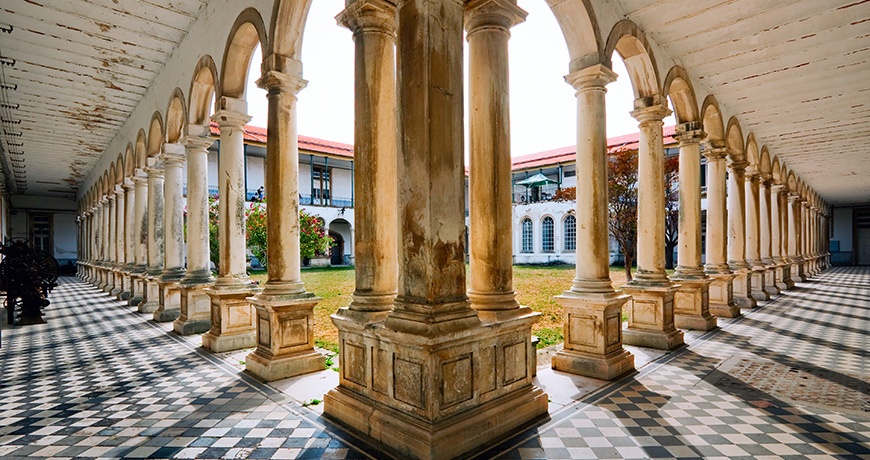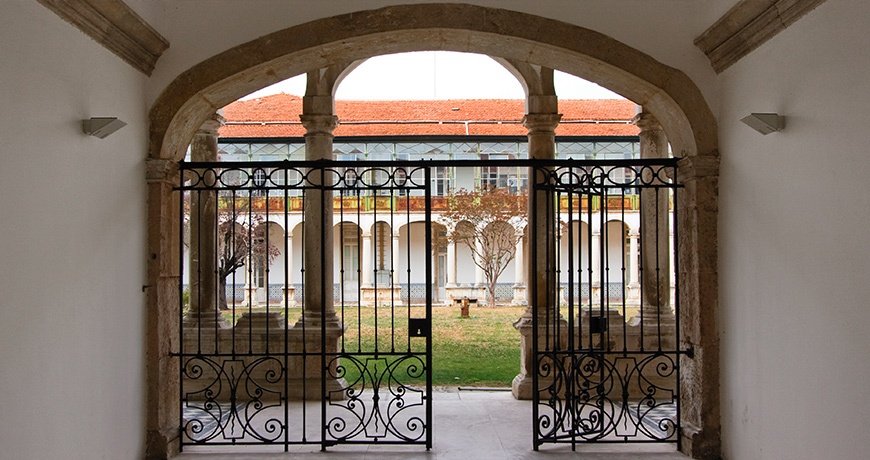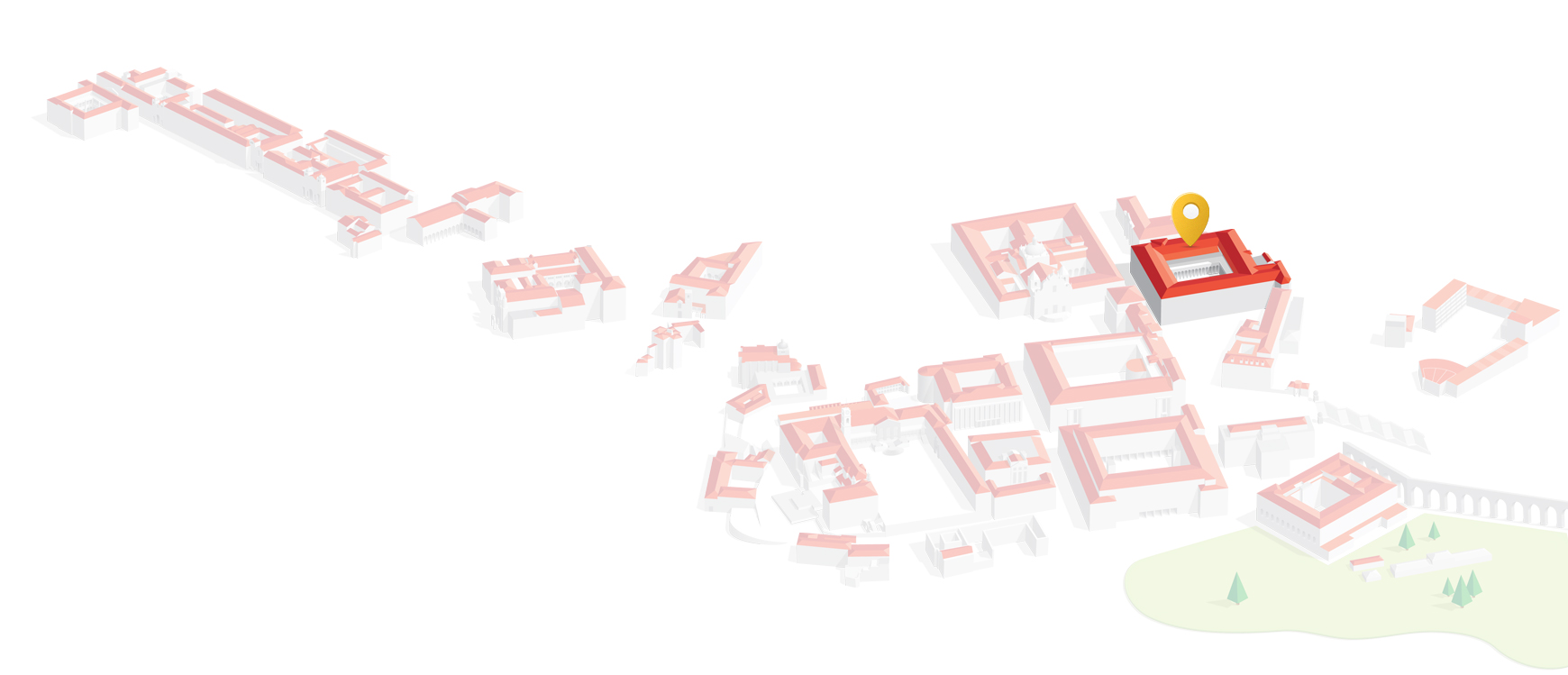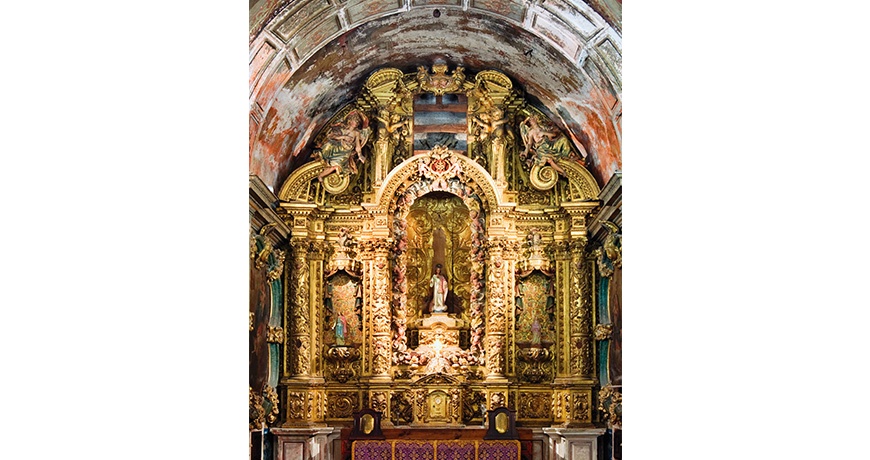Universidade de Coimbra Alta e Sofia — Candidatura a património mundial



Royal College of Arts
The construction of the College initiated in 1568.



Art and Architecture
The construction of the College initiated in 1568. It was built around a square-shaped courtyard decorated with Doric columns (the originals) on the lower floor. On the second floor, there are signs of the interven- tions from the last great reform, in the early 20th century, in the form of elegant cast iron pillars.
However, the building has lost much of its original character due to the various occu- pancies and uses to which it was put over the years, although some of the original architectural structures are preserved in the former classrooms (such as the pillars supporting the arches and the groin vaulted ceilings).
Regarding the two chapels in the College building, only the small one now remains. It is located on the first floor, on the eastern side. Although the 20th century’s building works, which raised the architectural struc- tures, absorbed areas of the chapel, the atrium and sacristy were preserved, with only slight alterations.

Proposed Intervention
In the final decades of the 20th century, the Royal College of Arts once more assumed the educational purposes for which it had initially been constructed. This proposal is thus designed to emphasise the educational character of the building. The Department of Architecture, which has been housed on the top floor of the building since 1988, will continue to operate there and a new separate programme will also be introduced – the University of Coimbra Postgraduate Programme in Arts, known as the “College of Arts”, already operating on the lower floor.
The proposal is oriented by the need to respect the individual character of the building by recovering its unique image, taking into account its original functions. Thus, the project will involve the demolition/ deconstruction of parts of the building added since the end of the 19th century, and of later extensions that are uncoordinated with the whole. These works must preserve the physical structure coinciding with the wall delimiting the Alta. The remaining spaces will generally undergo rehabilitation and restoration.
